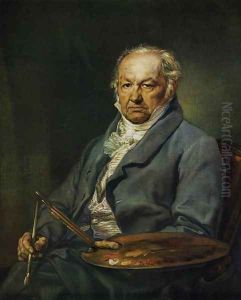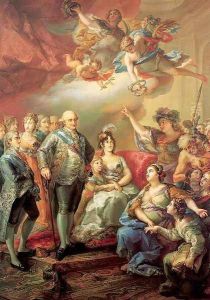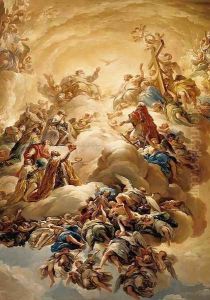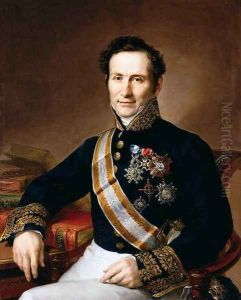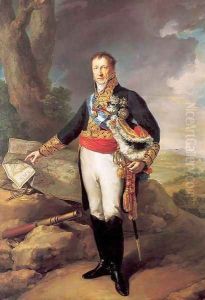Vincente Lapez Y Portana Paintings
Vicente López y Portaña was a Spanish painter, born on September 19, 1772, in Valencia, Spain. He was an important figure in the Spanish art world of the late 18th and early 19th centuries. López y Portaña showed an early interest in art and was initially taught by his father, who was a tailor and amateur painter. He later became a pupil of the painter Mariano Salvador Maella.
López's talent was recognized early, and at the age of thirteen, he won a scholarship to study in Madrid at the Real Academia de Bellas Artes de San Fernando, where he developed his skills further. His style was influenced by Neoclassicism, which was prevalent at the time, as well as by the works of old masters such as Raphael and Correggio.
In 1790, López won a second scholarship to study in Rome, where he spent several years. His time in Italy allowed him to study classical art and Renaissance works, which had a lasting impact on his style. He became known for his portraits, which combined a neoclassical adherence to line and form with a remarkable ability to capture the psychological depth and individuality of his subjects.
Vicente López y Portaña's return to Spain in 1799 marked the beginning of his mature career. He became court painter to King Charles IV and, after the Peninsular War, served Ferdinand VII in the same capacity. López y Portaña was a prolific artist, producing religious works, mythological scenes, and historical subjects, but he is most remembered for his portraits of the Spanish royal family and the nobility. His adeptness at rendering textures, such as the sheen of silk or the softness of skin, made his work highly sought after for its realism and attention to detail.
Beyond his painting, López y Portaña also held various academic positions. He was a director at the Madrid Academy and an honorary member of various European academies. His influence extended to his teaching, where he played a role in training the next generation of Spanish artists.
He continued to work and receive commissions well into old age. Vicente López y Portaña passed away in Madrid on July 22, 1850. His works continue to be appreciated for their technical mastery and their insightful portrayal of the human character, providing a window into the society and culture of his time.
